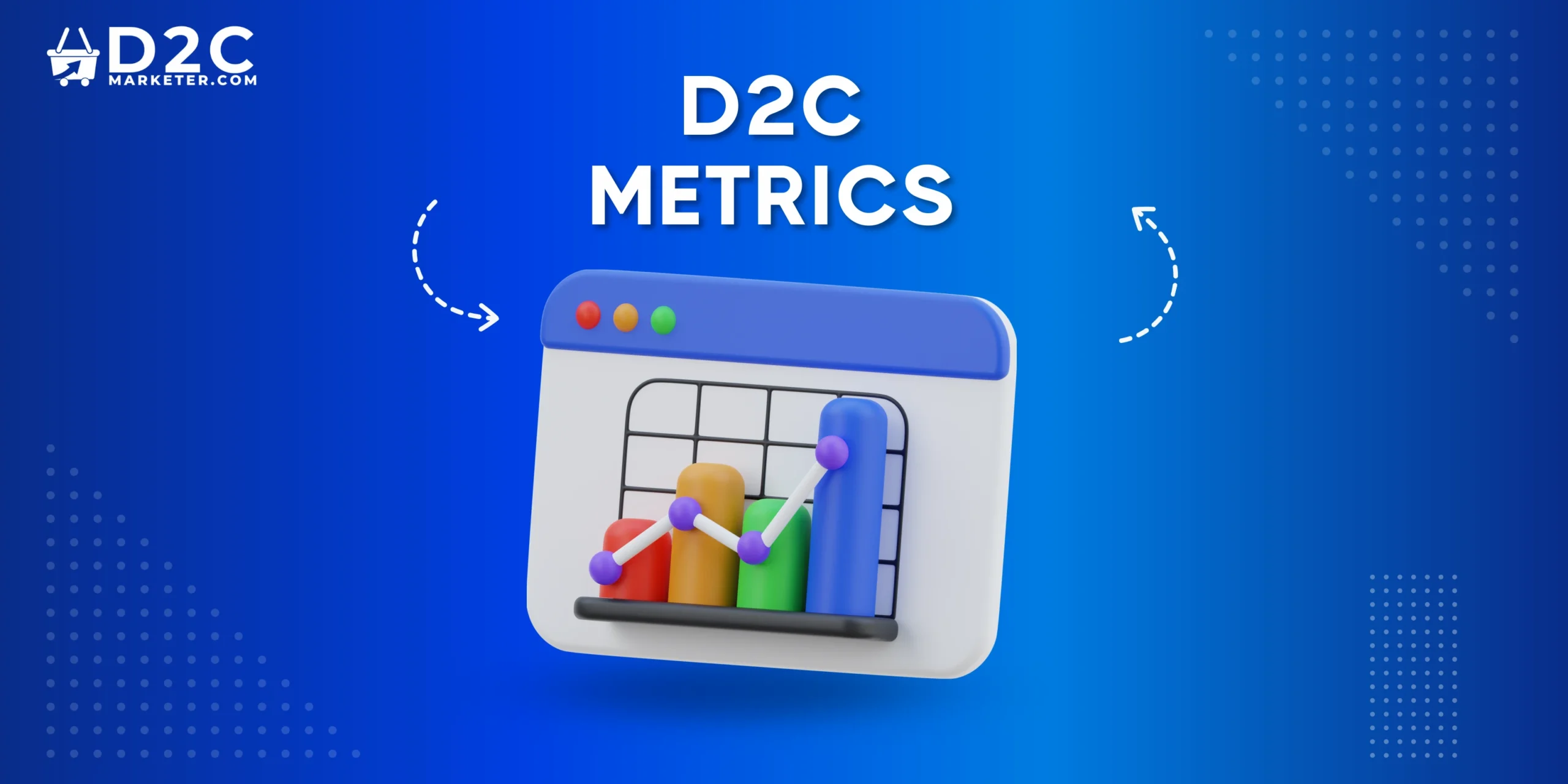Top D2C Metrics You Should Track for Business Growth
Tracking the right metrics is essential for the success of any D2C brand. As a direct-to-consumer business, you’re not just selling products, you’re building relationships with your customers. To drive growth, it’s crucial to understand what’s working and where you can improve.
The right metrics give you the insights you need to fine-tune your marketing strategies, optimize customer acquisition, and boost sales. From measuring Customer Acquisition Cost (CAC) to tracking Average Order Value (AOV), these numbers help you make smarter decisions and scale efficiently.
In this post, we’ll break down the key D2C metrics that can fuel your brand’s growth. Whether you’re looking to optimize your D2C marketing channels or improve your overall strategy, knowing which metrics to focus on is the first step toward building a more successful business.
Table of Contents
- Customer Acquisition Cost (CAC)
- Customer Lifetime Value (CLV)
- Partner with a D2C Marketing Agency
- Return on Ad Spend (ROAS)
- How to Optimize ROAS
- Conversion Rate (CR)
- How to Improve Conversion Rate
- Average Order Value (AOV)
- Strategies to Increase AOV
- Comparison of Key Metrics
- Cost of Goods Sold (COGS)
- Conclusion
- FAQs
Customer Acquisition Cost (CAC)
Customer Acquisition Cost (CAC) is a key metric for Direct-to-Consumer (D2C) brands, representing the cost of acquiring a new customer. To calculate CAC, simply divide your total sales and marketing expenses by the number of new customers acquired during a specific period. For example, if you spend $10,000 on marketing in one month and acquire 100 customers, your CAC is $100.
Why CAC Matters
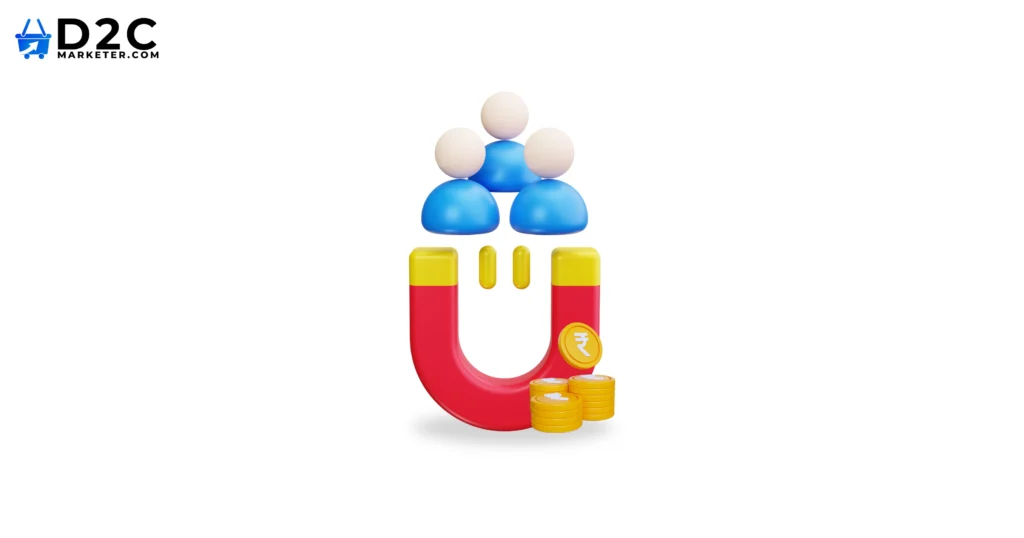
Keeping CAC low is crucial for any D2C brand strategy because it directly impacts profitability. A high CAC means you’re spending too much to acquire each customer, which can eat into your margins and make scaling difficult. A lower CAC, on the other hand, allows you to grow more sustainably, reinvest in marketing or innovation, and increase your D2C sales without sacrificing profitability.
For D2C brands, managing CAC is essential because you’re in direct control of the marketing channels you choose to engage with your audience. Whether you’re using D2C marketing strategies on social media, email, or through SEO, each channel’s cost-effectiveness impacts the bottom line. Therefore, finding ways to optimize CAC without compromising on customer quality is a constant goal for brands seeking long-term growth.
Strategies to Reduce CAC
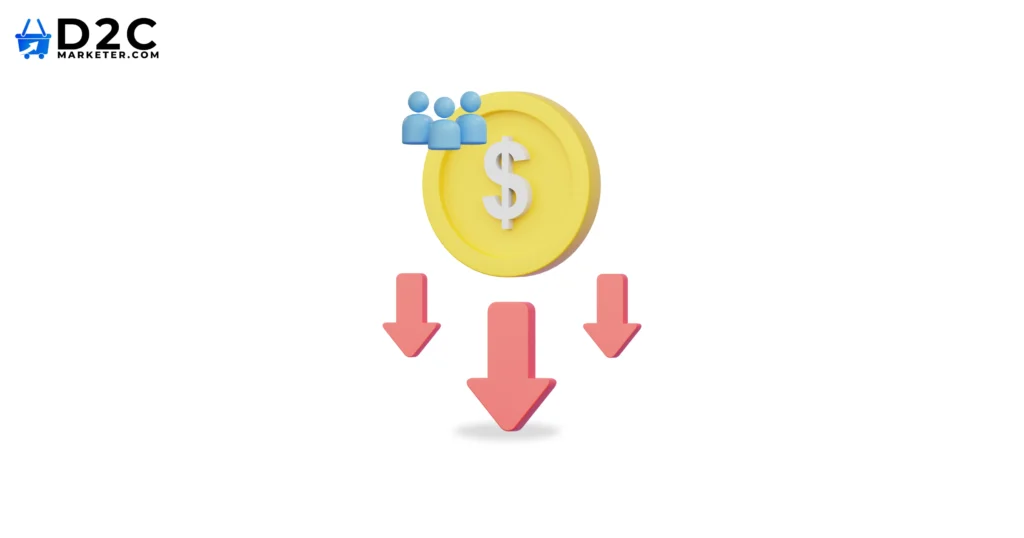
- Optimize Marketing Channels: Not all marketing channels are created equal. Focus your budget on the channels that deliver the highest ROI. By analyzing performance data across your D2C marketing channels, you can fine-tune your efforts to reach your target audience more efficiently.
- Refine Targeting: Better targeting means better conversion. Use data and customer insights to define your ideal audience more precisely. Understanding SEO trends for D2C brands can also help tailor your content to what customers are searching for, driving more qualified traffic.
- Customer Referrals: Implement a referral program to turn happy customers into advocates. Referral marketing helps reduce acquisition costs by tapping into an existing customer base to generate new leads.
- Focus on Retention: Retaining customers is cheaper than acquiring new ones. By providing great customer service and a personalized experience, you can increase customer lifetime value (CLV), making your CAC more sustainable in the long run.
- Leverage Automation and AI: Marketing automation tools powered by AI can help you deliver personalized content to potential customers at scale, lowering the cost per acquisition by targeting the right person at the right time.
Customer Lifetime Value (CLV)
Customer Lifetime Value (CLV) is the total revenue a customer brings to your brand over time. It’s one of the most important D2C metrics because it shows the long-term value of each customer. By increasing CLV, you can grow your business sustainably without needing to constantly acquire new customers.
How to Increase CLV Through Retention and Repeat Purchases
1. Personalize the Experience
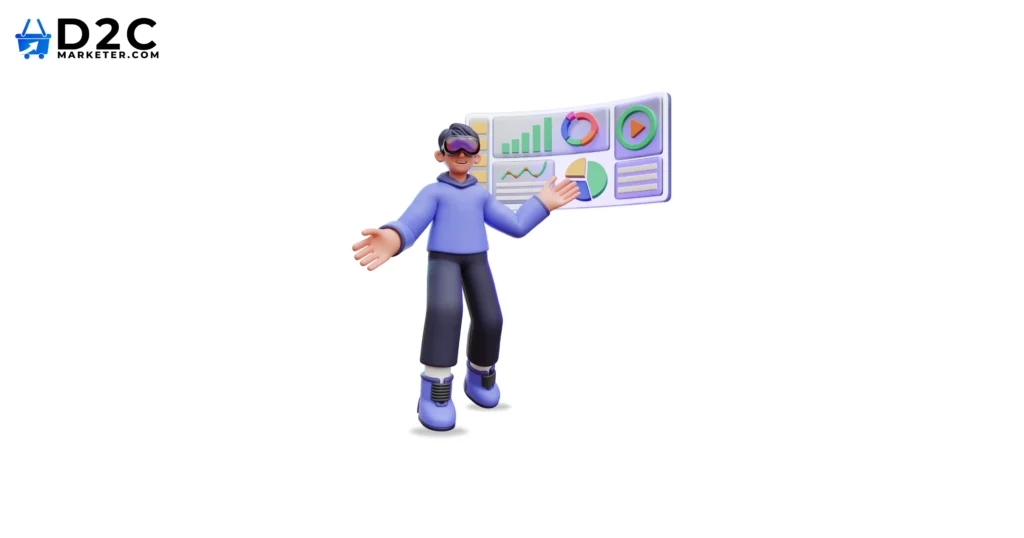
Personalization is key to increasing CLV. When you tailor your messages or product recommendations, customers feel valued. This leads to more repeat purchases. For example, suggest products based on past behavior or send personalized offers. Personalized experiences help build loyalty, which boosts D2C sales.
2. Loyalty Programs
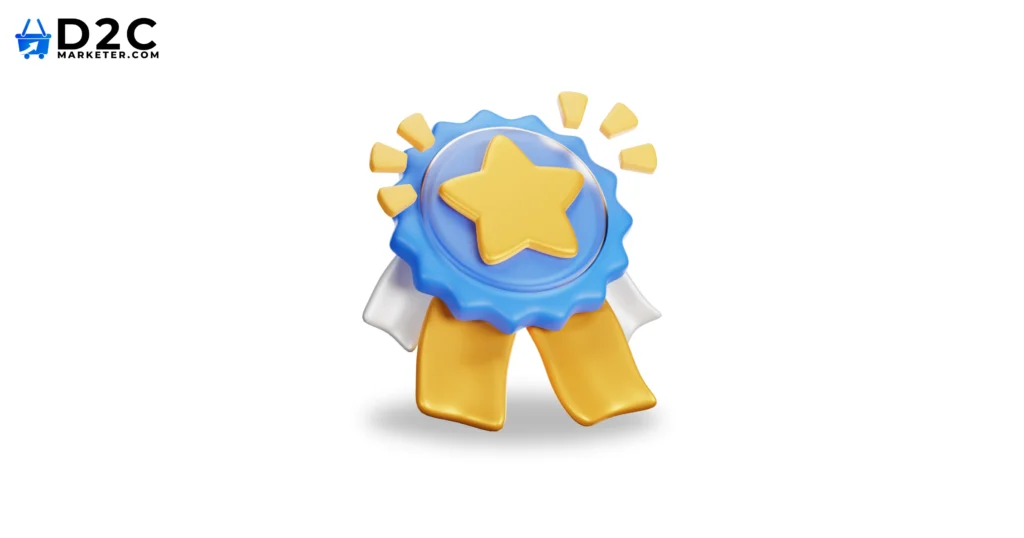
Loyalty programs encourage repeat purchases by rewarding customers. Offer discounts, exclusive deals, or points that customers can redeem later. These programs create a sense of belonging. Customers who feel appreciated are more likely to stay loyal, increasing CLV over time.
3. Subscription Models
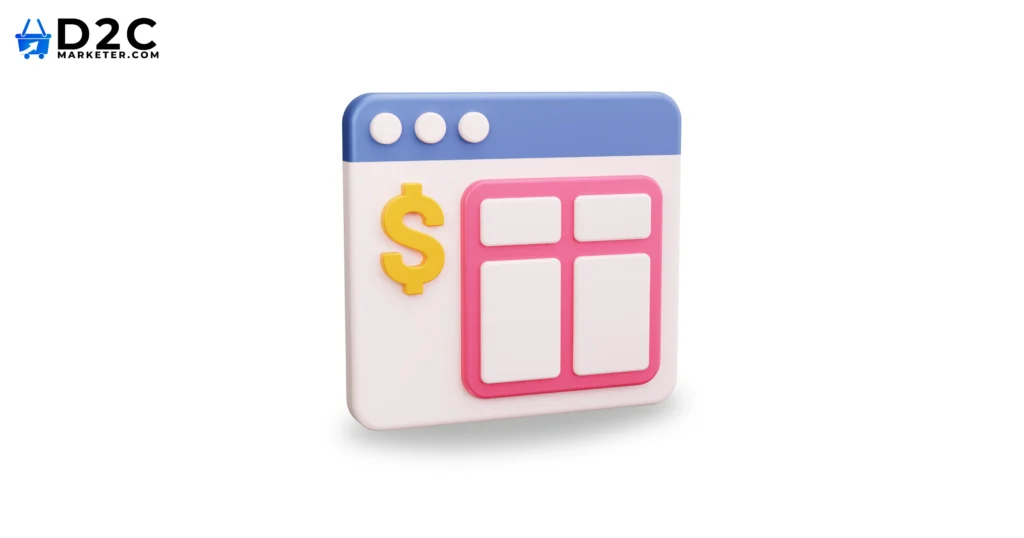
If your product is consumable, a subscription model can be a game-changer. Subscriptions provide steady revenue and ensure repeat orders. Customers enjoy the convenience of automatic deliveries, and you benefit from predictable income. Offering a subscription model can greatly improve CLV.
4. Excellent Customer Service
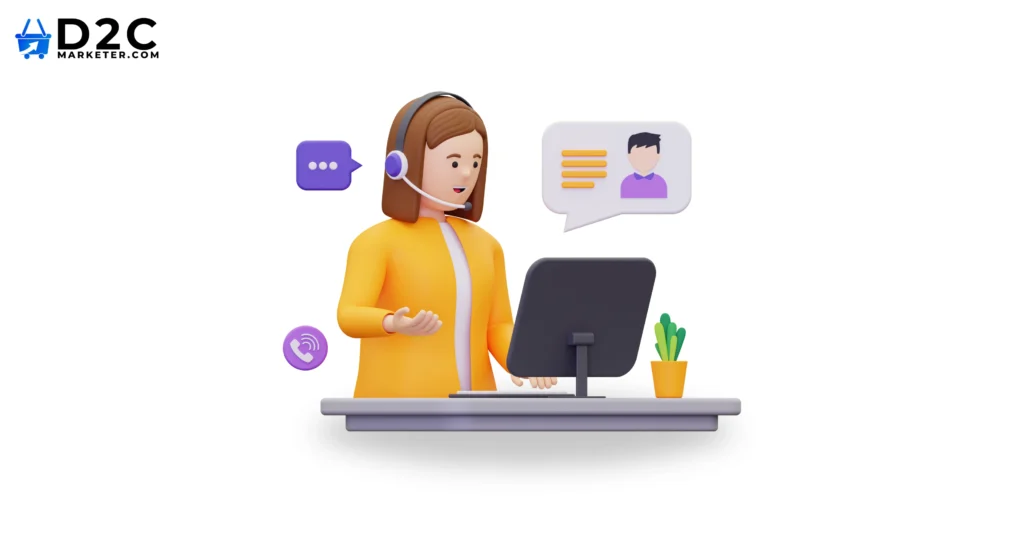
Great customer service is essential for retaining customers. A smooth shopping experience and quick problem resolution help build trust. When customers feel heard, they are more likely to return. Responsive service ensures customers stay loyal and keeps your CLV high.
5. Content Marketing and SEO
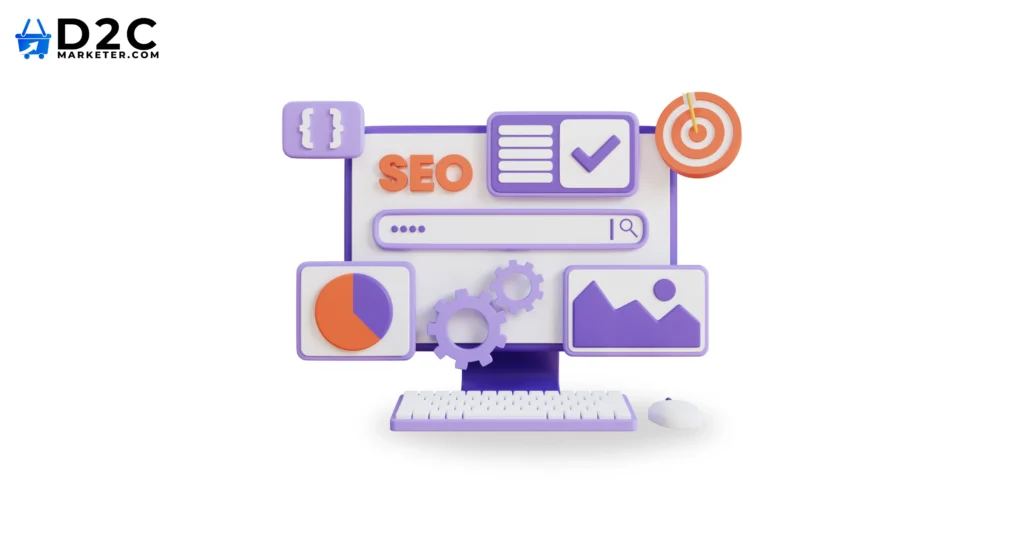
Content marketing is another way to increase CLV. By offering valuable content, you stay top of mind. SEO plays a role here too. Optimizing your content for SEO trends for D2C brands ensures customers find you. Engaged customers are more likely to make repeat purchases, boosting their lifetime value.
Partner with a D2C Marketing Agency
If managing CLV feels challenging, a D2C marketing agency can help. They specialize in creating direct-to-consumer marketing strategies that focus on customer retention. With the right D2C brand strategy, you can boost CLV and build stronger customer relationships.
By focusing on retention, loyalty, and convenience, you can increase CLV and grow your D2C brand over time.
Return on Ad Spend (ROAS)
Return on Ad Spend (ROAS) is one of the most critical D2C metrics for brands investing in paid advertising. ROAS measures the revenue you generate for every dollar spent on advertising. Essentially, it tells you how effective your ads are at driving sales. For example, if you spend $1,000 on ads and generate $5,000 in revenue, your ROAS would be 5:1, meaning you earn $5 for every $1 spent.
Why does ROAS matter? In the world of direct-to-consumer marketing, every dollar you spend on ads needs to deliver value. A low ROAS means you’re spending too much on ads without seeing the desired return, whereas a high ROAS indicates that your campaigns are efficient and driving profitable sales. This is why optimizing ROAS is key to maximizing the effectiveness of your D2C marketing strategies and increasing D2C sales.
How to Optimize ROAS
1. A/B Testing
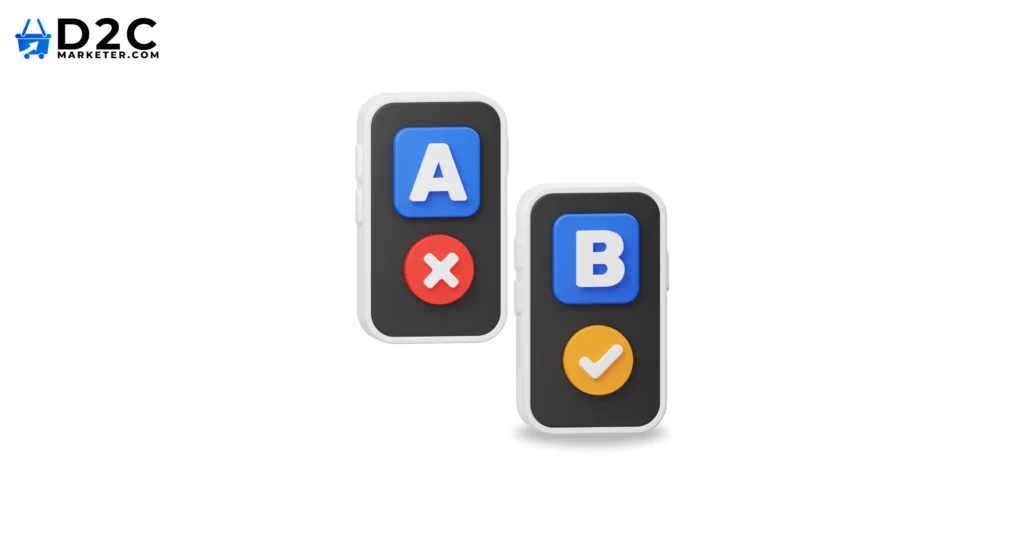
A/B testing is one of the most effective ways to improve your ROAS. By testing different versions of your ads, such as variations in copy, visuals, and calls to action, you can identify what resonates best with your audience. Small changes, like a different headline or a new image, can significantly impact your conversion rates and ultimately boost ROAS. Testing allows you to fine-tune your campaigns and ensure you’re putting money into the ads that perform the best.
2. Targeting the Right Audience
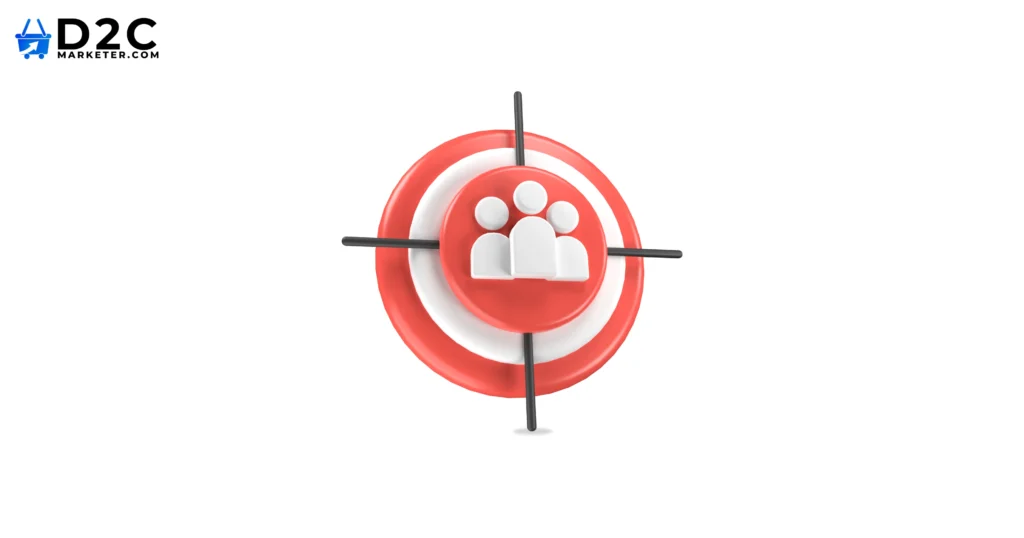
Targeting the right audience is crucial to optimizing ROAS. If your ads are shown to people who are unlikely to convert, your ad spend will be wasted. By refining your targeting, using data insights, customer behavior, and demographics, you ensure your ads are reaching the most relevant potential customers. Whether you’re using D2C marketing channels like Facebook, Google, or Instagram, make sure you’re reaching the audience most likely to engage with your product.
Advanced targeting options, such as lookalike audiences or retargeting past website visitors, can also help improve your D2C brand strategy and lead to higher ROAS. The more specific and relevant your targeting, the better your chances of driving profitable sales.
3. Smart Budget Allocation
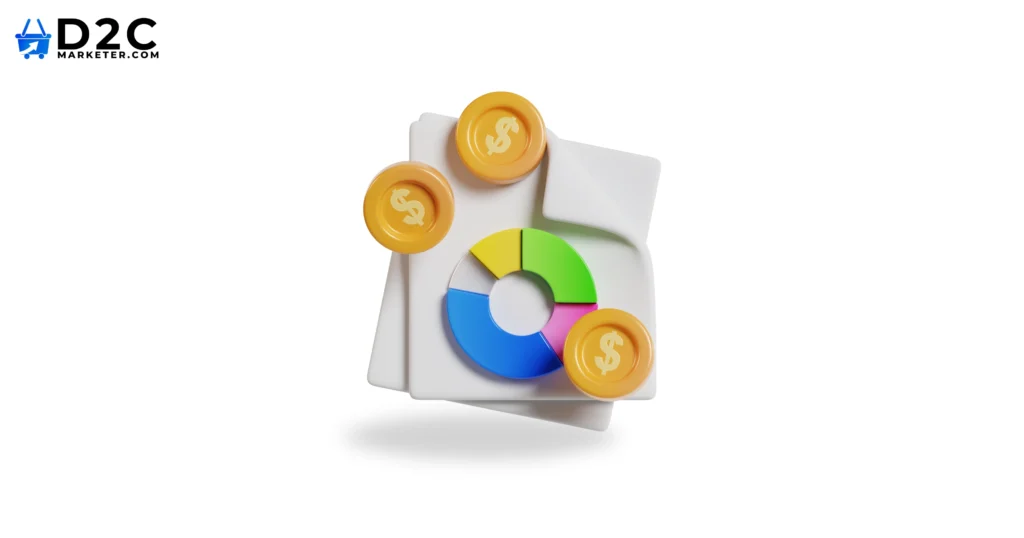
Effective budget allocation is another key factor in improving ROAS. Spread your budget wisely across different campaigns and channels, and always focus on where you’re seeing the best returns. If you find that one channel (like, Instagram ads) is outperforming others (like Google Ads), shift more of your budget there. Additionally, prioritize high-performing audiences, those who have shown interest or have already engaged with your brand.
By continuously monitoring and adjusting your D2C marketing channels, you can ensure that your ad spend is driving the best possible results.
Conversion Rate (CR)
Conversion Rate (CR) is one of the most important D2C metrics for understanding how well your website or landing pages are performing. In simple terms, it’s the percentage of visitors to your site who complete a desired action, like making a purchase, signing up for a newsletter, or downloading an app.
To calculate CR, you divide the total number of conversions (e.g., purchases) by the total number of visitors, then multiply by 100. For example, if you had 1,000 visitors and 50 purchases, your conversion rate would be 5%.
A higher CR means your site is effectively turning visitors into customers, which directly impacts D2C sales. So, improving your CR is one of the most cost-effective ways to boost revenue without increasing traffic.
How to Improve Conversion Rate
1. Optimize Your Website and User Experience
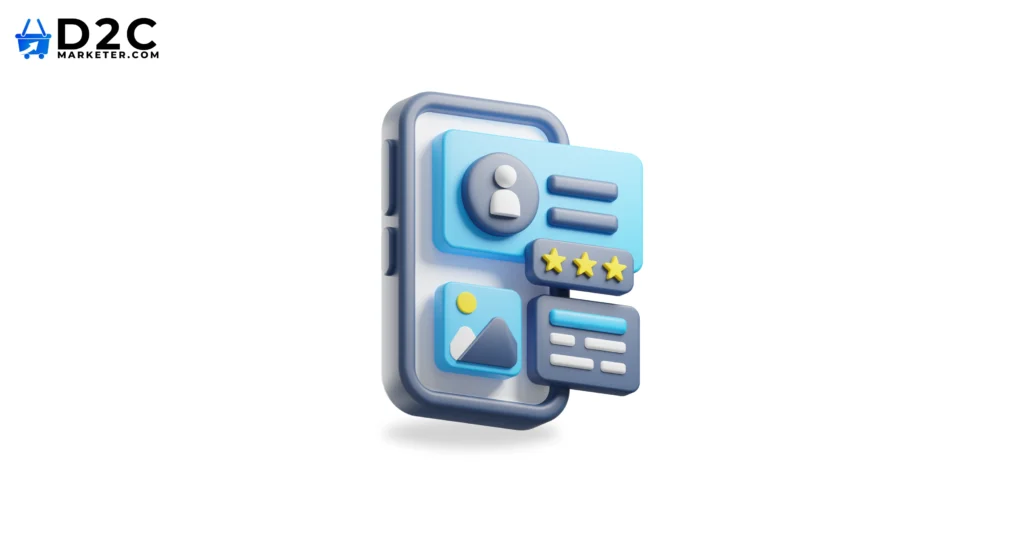
The foundation of a high CR is a user-friendly website. If visitors can’t easily navigate your site or find what they’re looking for, they’ll leave without converting. Focus on fast load times, a clean design, and easy navigation to ensure a seamless experience. Make sure your website is mobile-friendly too, as an increasing number of customers shop on their phones.
Streamlining the customer journey is key to improving CR. If a potential customer can’t quickly find the information they need or feels frustrated by your site, they’re likely to abandon their cart. Use D2C marketing strategies that guide customers effortlessly from browsing to checkout, reducing friction along the way.
2. Improve Landing Pages
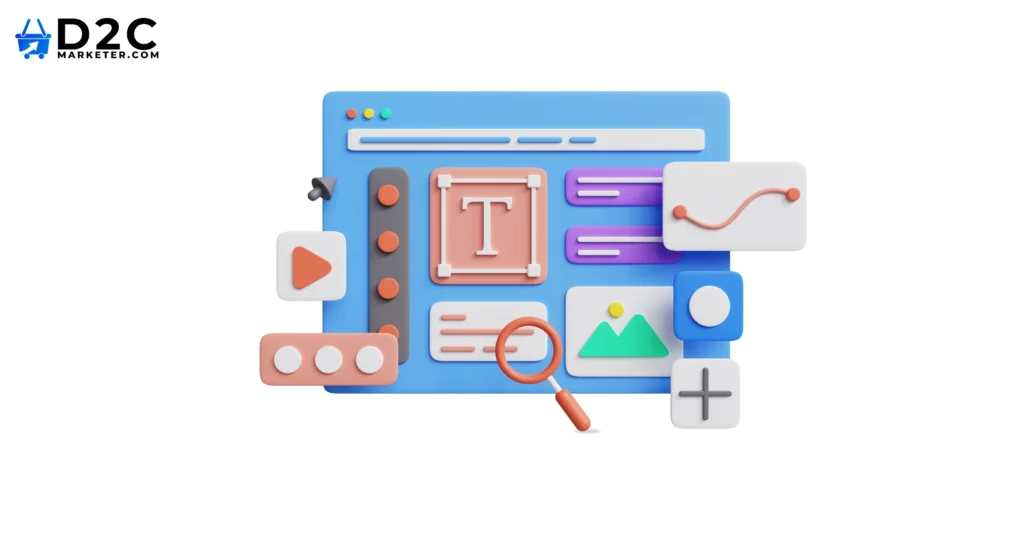
Landing pages are often the first point of contact with a potential customer. Ensure your landing pages are optimized for conversion by making them clear, engaging, and relevant. This means having compelling headlines, clear product descriptions, and strong calls to action (CTAs). You should also ensure that the page loads quickly and features high-quality images or videos that highlight the product in the best light.
If you’re running ads on D2C marketing channels, like Facebook or Google, ensure the landing page aligns with the ad’s message and offers a smooth transition. The more relevant the landing page is to the ad, the higher the chances of conversion.
3. Simplify the Checkout Process
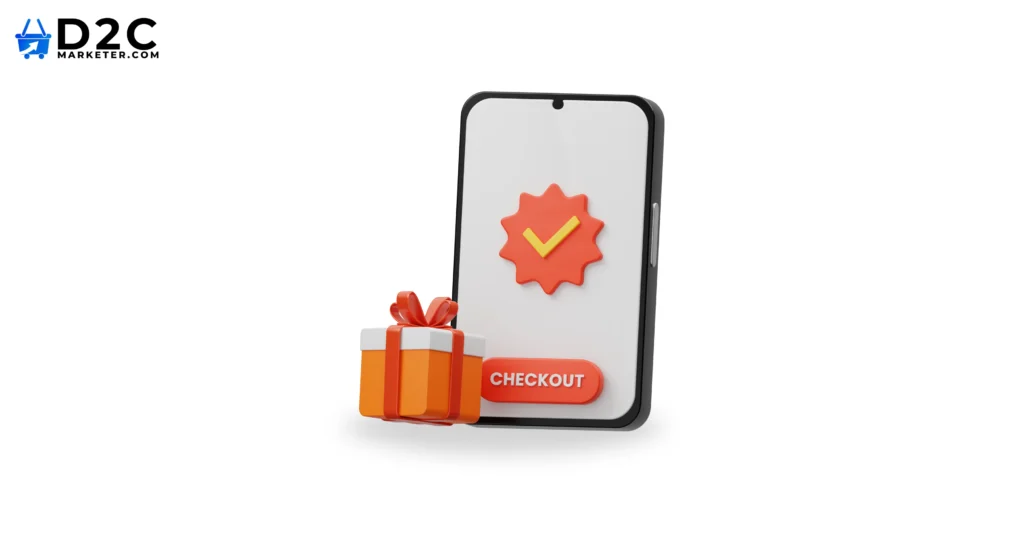
A complicated checkout process is one of the biggest conversion killers. If customers are faced with too many steps, unnecessary form fields, or unexpected costs, they may abandon their purchase. To optimize your checkout process, reduce the number of steps, allow for guest checkout, and offer multiple payment options. Additionally, display clear shipping costs and return policies to avoid any surprises at the end.
Offering incentives like free shipping or a discount code at the checkout can also encourage hesitant buyers to complete their purchase, ultimately improving your conversion rate.
Tools to Track and Improve Conversion Rates
To track and improve your CR, there are several tools available to help you measure performance and make data-driven improvements.
- Google Analytics: A comprehensive tool to track website traffic, user behavior, and conversions. Google Analytics allows you to understand where visitors are dropping off in the funnel and helps you pinpoint areas for improvement.
- A/B Testing Tools: These tools let you test different versions of your landing pages, headlines, and CTAs to see which ones resonate most with your audience. By continuously optimizing these elements, you can increase your CR over time.
- Heatmaps: Heatmap tools show you where users are clicking, scrolling, and spending the most time on your site. This insight can help you adjust page layout and optimize content placement to boost conversions.
Average Order Value (AOV)
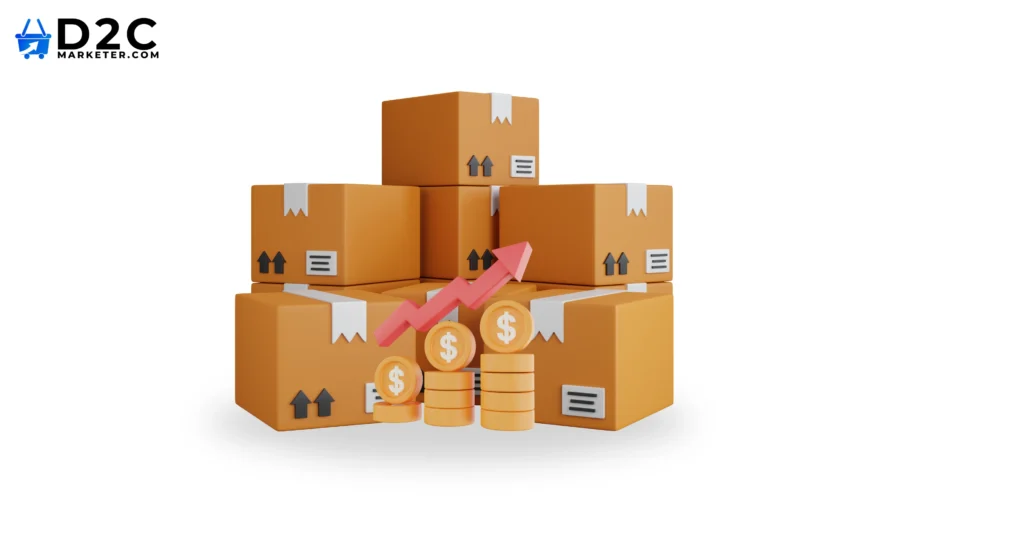
Average Order Value (AOV) is a key D2C metric that measures the average amount of money customers spend per order. Increasing AOV can have a significant impact on your revenue without needing to attract more customers. In fact, increasing AOV is one of the most cost-effective ways to boost D2C sales and drive profitability, as it allows you to maximize the value of each transaction.
Strategies to Increase AOV
1. Upselling and Cross-Selling
Two of the most effective strategies for increasing AOV are upselling and cross-selling.
- Upselling involves encouraging customers to buy a more expensive version of the product they’re already interested in. For example, if a customer is purchasing a standard version of a product, you can offer a premium version with more features or benefits.
- Cross-selling suggests related or complementary products. For instance, if someone is buying a camera, you might suggest a lens or a tripod. By presenting these options in a way that feels natural, you can increase the total order value without being overly pushy.
Both upselling and cross-selling can be done on product pages, during the checkout process, or through follow-up emails. The key is to make sure the additional products or upgrades are relevant and add value to the customer’s original purchase.
2. Product Bundling
Bundling is another great way to increase AOV. By offering customers a set of products at a discounted price when bought together, you not only increase the value of the sale but also give customers the feeling they are getting more for their money. For example, offering a “Buy One, Get One 20% Off” deal or creating product bundles (e.g., a skincare set or a tech bundle) can entice customers to purchase more than they originally intended.
Bundling is especially effective for D2C brands that offer complementary products. If you can offer a package deal that saves your customer money while simultaneously promoting additional products, you create a win-win situation.
3. Personalized Recommendations and Product Suggestions
Personalization is key when it comes to increasing AOV. By suggesting relevant products based on customers’ browsing history or past purchases, you make it easier for them to find items they actually want and need. For example, if a customer has purchased a laptop, you can recommend accessories like a laptop bag or mouse.
Leveraging SEO trends for D2C brands and customer data allows you to deliver personalized product suggestions across various touch points, whether that’s through personalized emails, website recommendations, or on-site pop-ups. These tailored suggestions help increase the likelihood of customers adding more items to their cart, thus increasing AOV.
The Role of Personalized Experiences
Personalized experiences do more than just boost AOV, they help build stronger customer relationships. When you offer tailored product suggestions, you show your customers that you understand their preferences and needs. This not only increases the chances of higher-value orders but also enhances customer loyalty, encouraging repeat purchases.
Comparison of Key Metrics
| Metric | Formula | Why It’s Important | Strategies to Improve |
| Customer Acquisition Cost | Total Marketing Cost ÷ New Customers | Controls profitability and growth | Optimize marketing channels, referral programs |
| Customer Lifetime Value | Total Revenue from Customer | Encourages retention and repeat sales | Loyalty programs, personalized offers |
| Return on Ad Spend | Revenue ÷ Advertising Costs | Measures ad effectiveness | A/B testing, optimized targeting, budget reallocation |
| Conversion Rate | (Conversions ÷ Total Visitors) x 100 | Drives revenue by converting visitors | Optimized landing pages, simplified checkout |
| Average Order Value | Total Revenue ÷ Number of Orders | Increases profitability per transaction | Upselling, cross-selling, personalized product bundles |
Cost of Goods Sold (COGS)
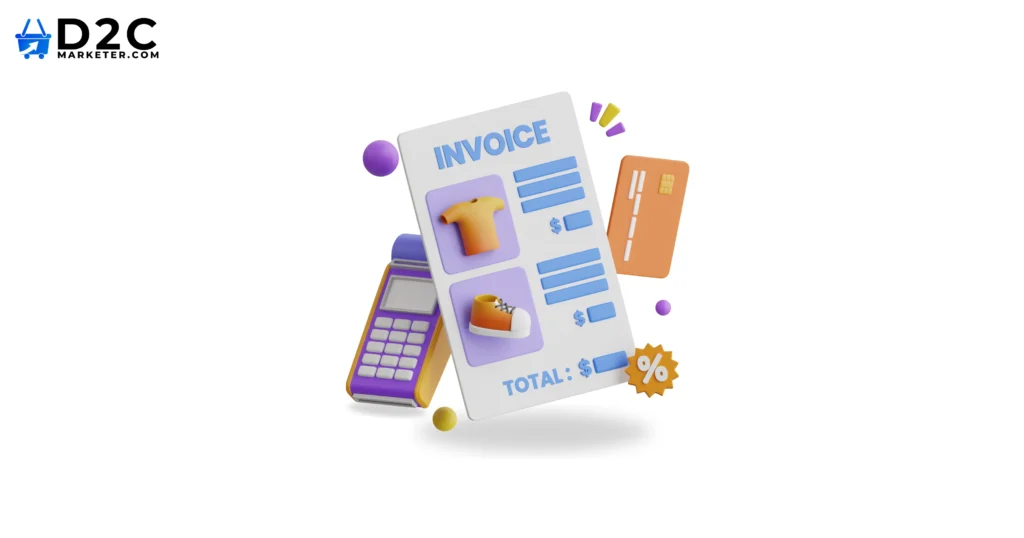
Cost of Goods Sold (COGS) represents the direct costs tied to producing the products you sell. It includes everything from raw materials and labor to manufacturing expenses. However, it does not include indirect costs like shipping, marketing, or sales expenses. Understanding your COGS is crucial because it directly impacts your profitability. Lowering COGS means higher profit margins, which allows you to reinvest more in your business, whether that’s for scaling production, improving your D2C brand strategy, or expanding marketing efforts to increase D2C sales.
Why COGS Matters for Your Business
COGS is an important metric for any D2C brand, especially when trying to track and improve profitability. If your COGS is high, it eats into your margins, making it harder to achieve sustainable growth. For example, if you’re spending too much on raw materials or labor costs, it can be difficult to offer competitive pricing or reinvest in your marketing efforts. On the other hand, if you can reduce COGS, you can improve your margins, which provides more room to experiment with D2C marketing strategies, develop new products, or even scale faster.
COGS Calculation:
To calculate COGS, use the following formula:
COGS = (Beginning Inventory + Purchases) − Ending Inventory
This calculation helps you determine the cost of the goods you’ve sold during a specific period, giving you a clearer picture of your direct production expenses.
Strategies to Reduce COGS
1. Optimize Your Supply Chain
One of the best ways to reduce COGS is to optimize your supply chain. This can involve negotiating better terms with suppliers, finding alternative sources for cheaper materials, or consolidating shipments to reduce transportation costs. Building strong relationships with your suppliers allows for more favorable pricing and better inventory management, which can directly lower your production costs.
2. Automate Production
Automating parts of your production process can help reduce labor costs, which are often one of the highest contributors to COGS. Whether it’s through investing in more efficient machinery, streamlining workflows, or adopting software tools that reduce manual labor, automation can help you produce more at a lower cost. This investment not only reduces COGS but can also improve your overall efficiency, allowing your team to focus on scaling your D2C marketing channels and growing your customer base.
3. Implement Just-In-Time (JIT) Inventory
Just in time inventory is a strategy where you order materials only when you need them, minimizing storage costs and reducing the risk of overstocking or wasting inventory. For D2C brands, this approach can significantly lower warehouse costs and prevent you from tying up cash in unsold stock. JIT inventory systems also help with cash flow, as you’re not over-investing in inventory that sits around for long periods.
Conclusion
Tracking the right D2C metrics is more than just number-crunching, it’s the key to making smarter decisions that drive real growth for your brand. By keeping an eye on things like Customer Acquisition Cost (CAC), Customer Lifetime Value (CLV), and Return on Ad Spend (ROAS), you can fine-tune your marketing efforts, boost D2C sales, and build stronger, more profitable customer relationships.
These metrics give you the insights needed to optimize everything from your conversion rate (CR) to your average order value (AOV) and cost of goods sold (COGS). With the right focus, you’ll see your brand scale with sustainable growth.
Need help tracking and optimizing these D2C metrics? At D2C Marketer, we specialize in crafting data-driven solutions that help D2C brands thrive.
Reach out today and let’s design a strategy that puts your brand on the fast track to success!
FAQs
Customer Lifetime Value (CLV) is a crucial metric as it measures the total revenue a customer generates over their entire relationship with your business.
The frequency of tracking metrics depends on your business size and operational needs. However, it’s generally recommended to track key metrics at least weekly or monthly to identify trends and make timely adjustments.
Yes, you can improve your conversion rate without a complete website redesign. Focus on optimizing existing elements like product descriptions, calls-to-action, and checkout processes. A/B testing can help you identify areas for improvement.
To reduce Customer Acquisition Cost (CAC), explore cost-effective marketing channels like email marketing, content marketing, and social media. Additionally, optimize your targeting and ad spend to reach the most relevant audience.
Increase Average Order Value (AOV) by offering product bundles or cross-selling related items. Implement upselling techniques to encourage customers to purchase higher-priced items or premium versions.

